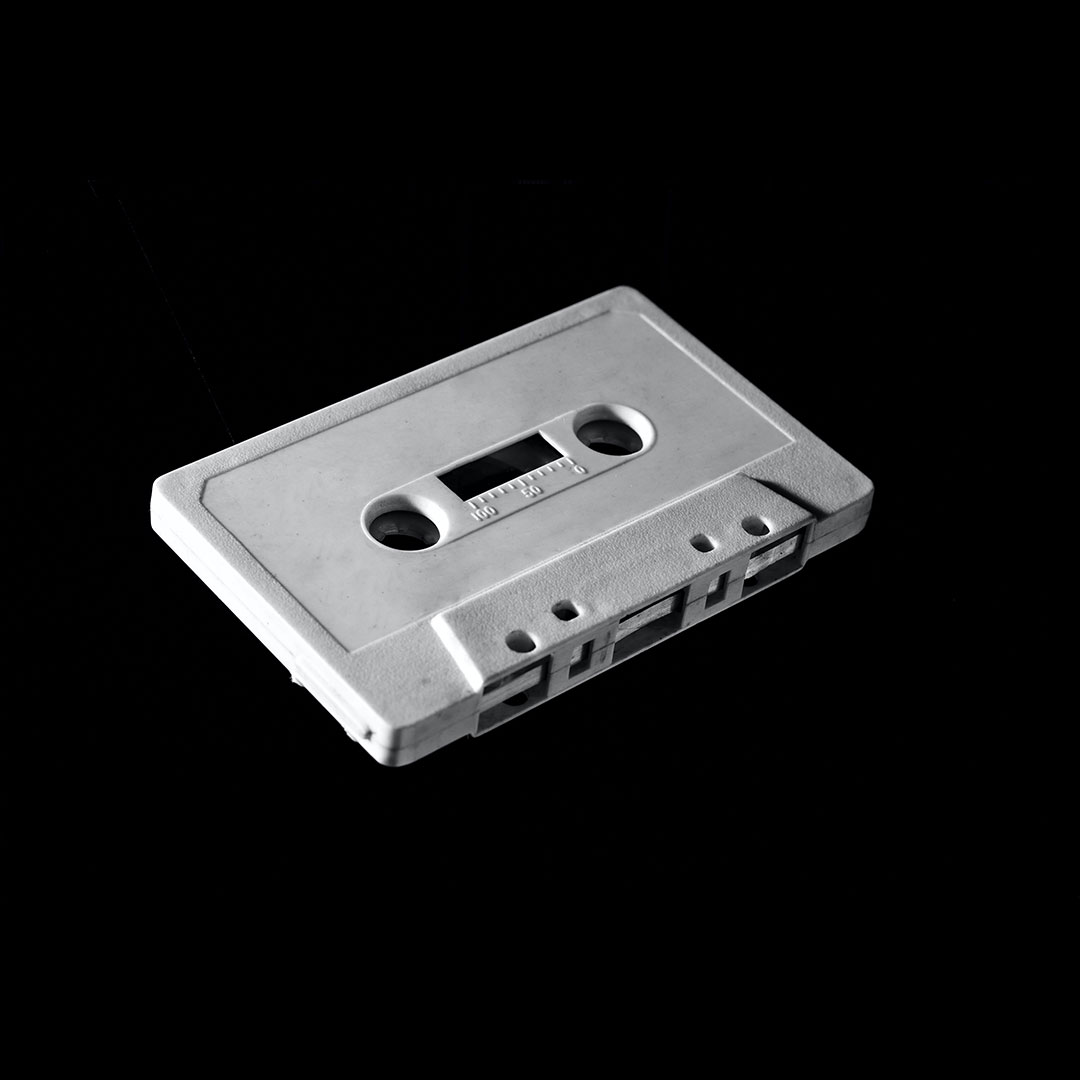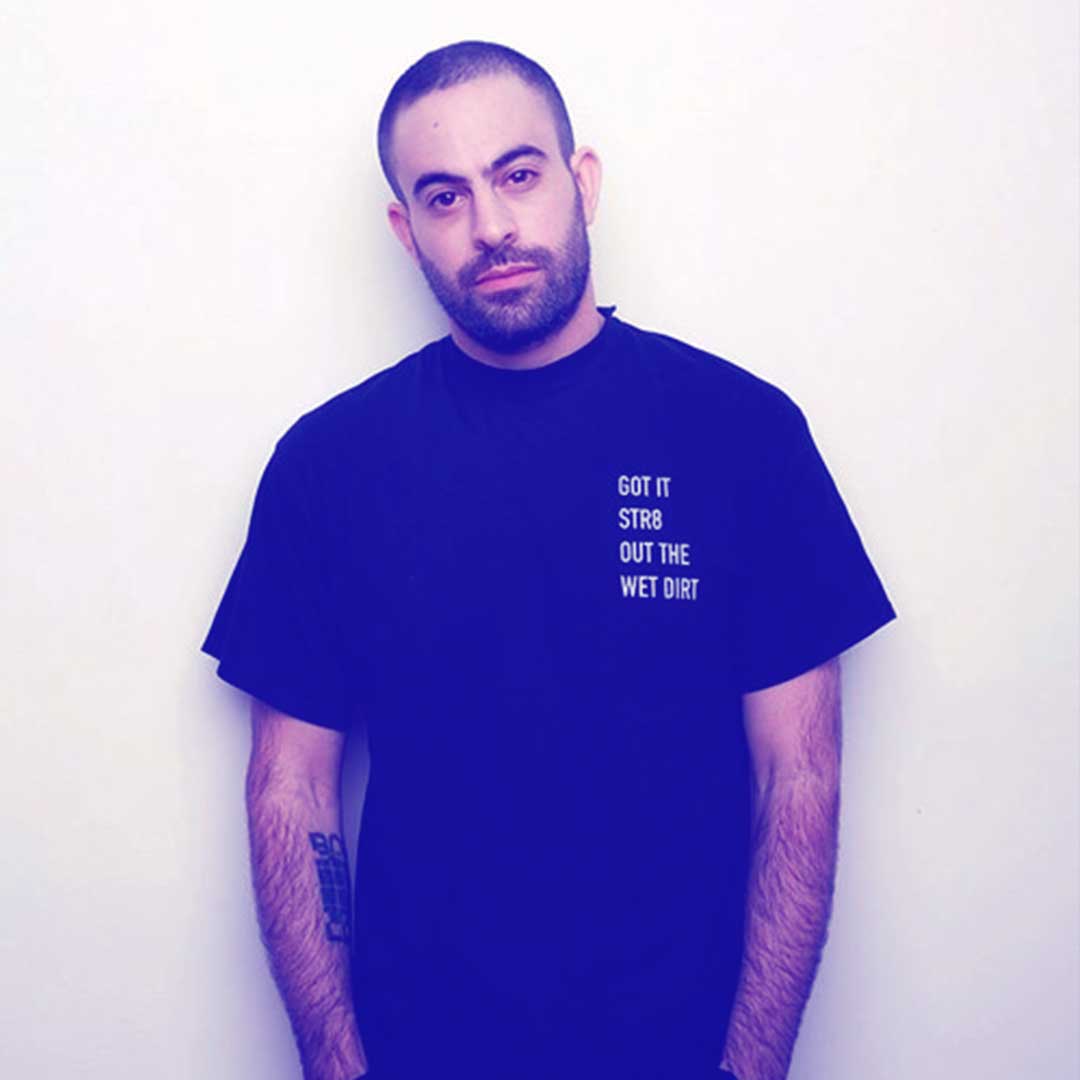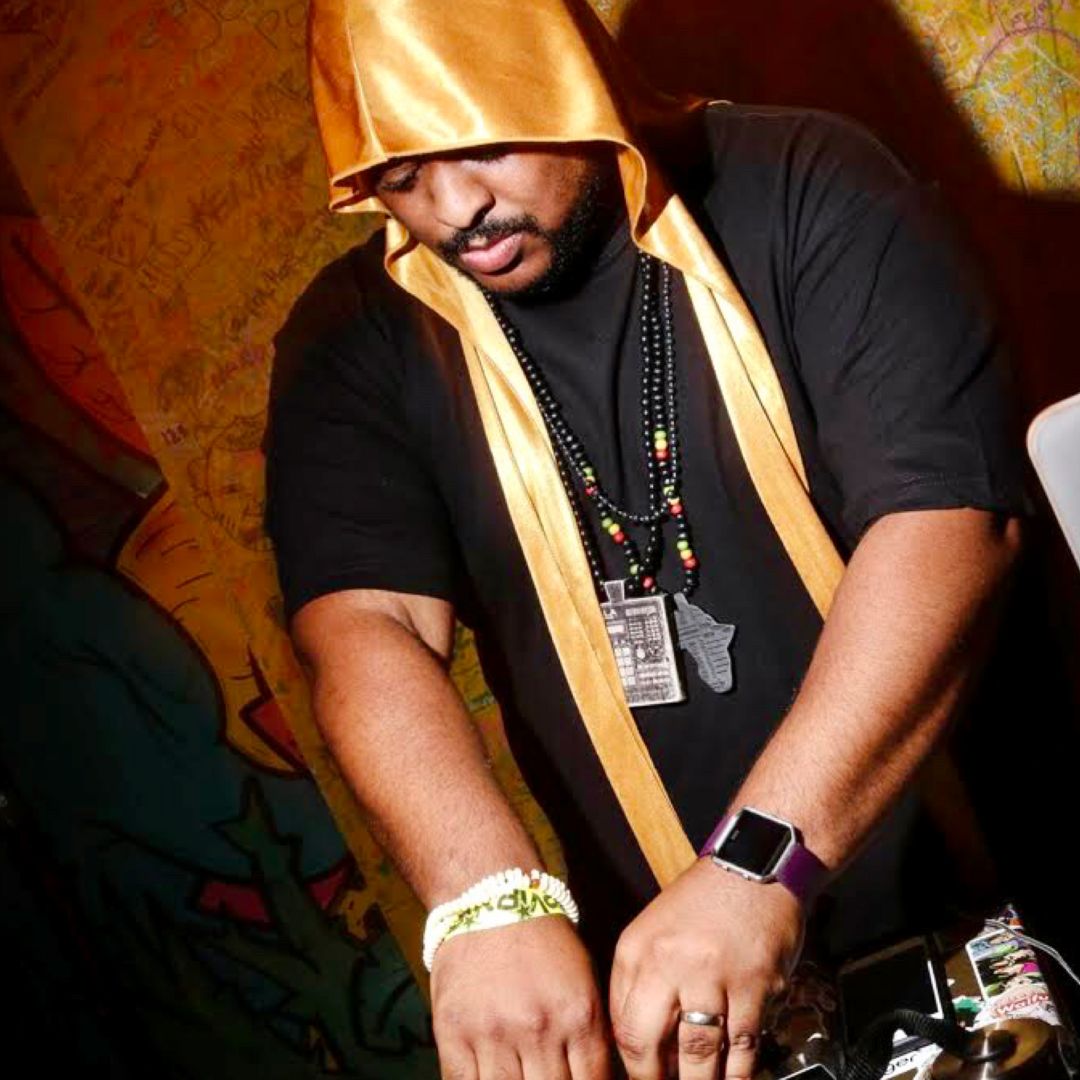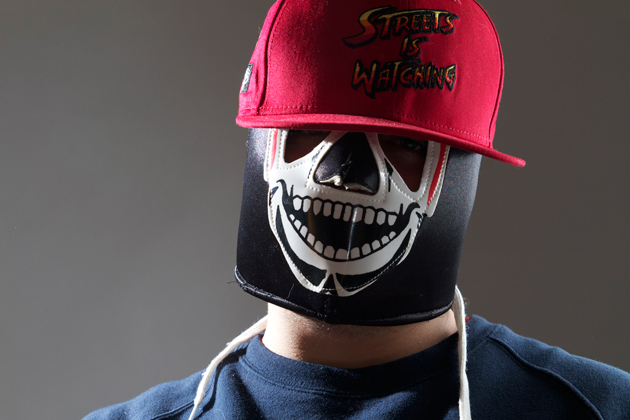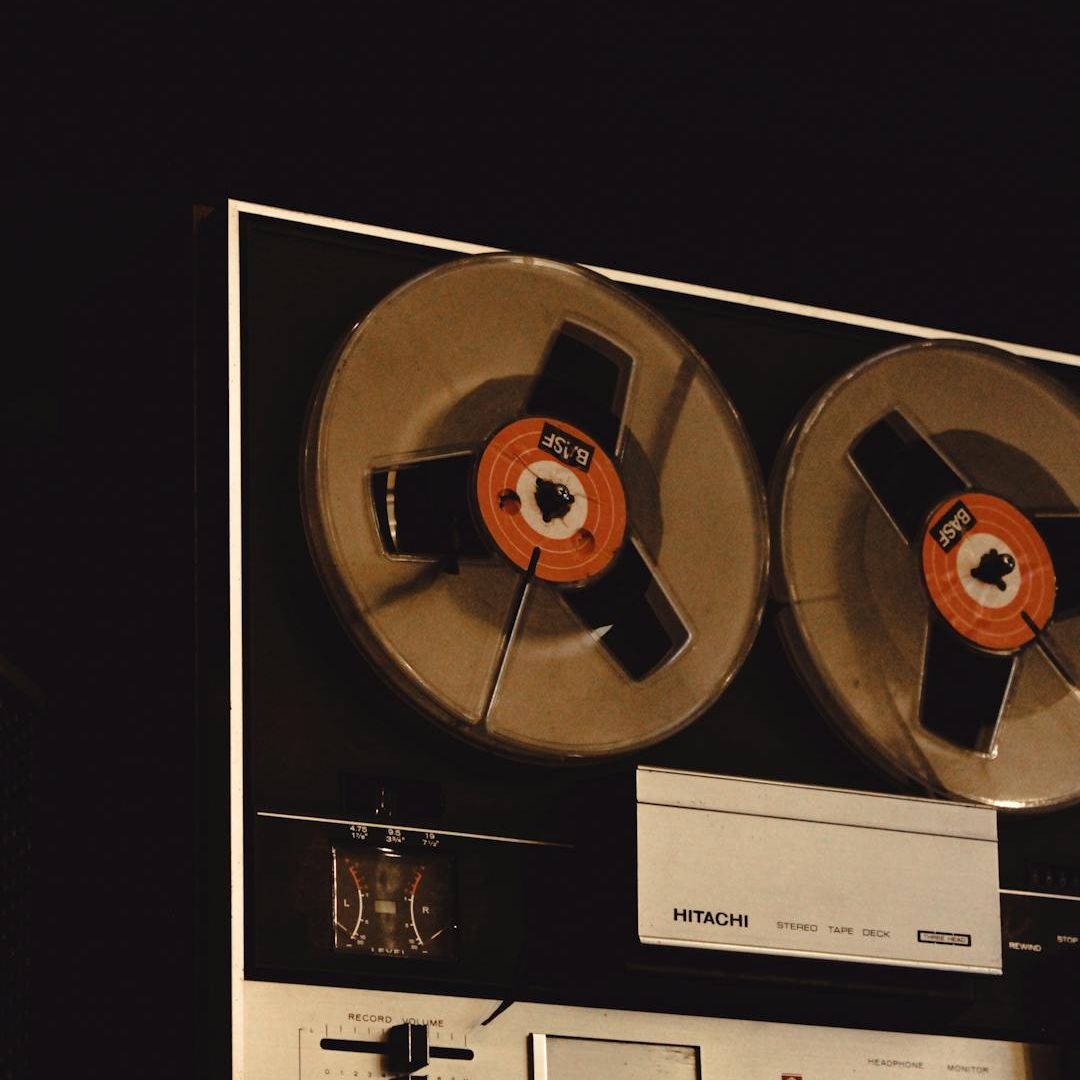Hip-Hop Mixtapes 101: Let’s Explore It
True to the original KRS-One line reciting “Hip-Hop is what you live“, we can say that since its birth hip-hop has not been just a genre of music, as it is often referred to today. Moreover, as a culture that has evolved over the past five decades, it has changed an awful lot, too, over said decades.
You can ask three different people, from three different demographics, what hip-hop is to them, and the answer will be completely different every time. You have many markers of those changes, within the so-called “culture” itself.
One of the most significant markers of this evolution is possibly the mixtape. Hip-hop mixtapes, a unique and peculiar vehicle of transmission way before the Internet, have been a crucial part of the culture and related genres since its inception, in the mid-late 1970s.
From their early beginnings, as cassette tape recordings, to their current digital form, mixtapes have been a way for DJs, selectors, and artists to showcase their musical talents, express themselves outside of traditional commercial releases and circuits, and break news for and from the underground.
So, as hip-hop fiends and seasoned players in the game, we’ll go on a journey through time to uncover the intriguing and surprising history of the mixtape. Get your tapes ready, will ya?
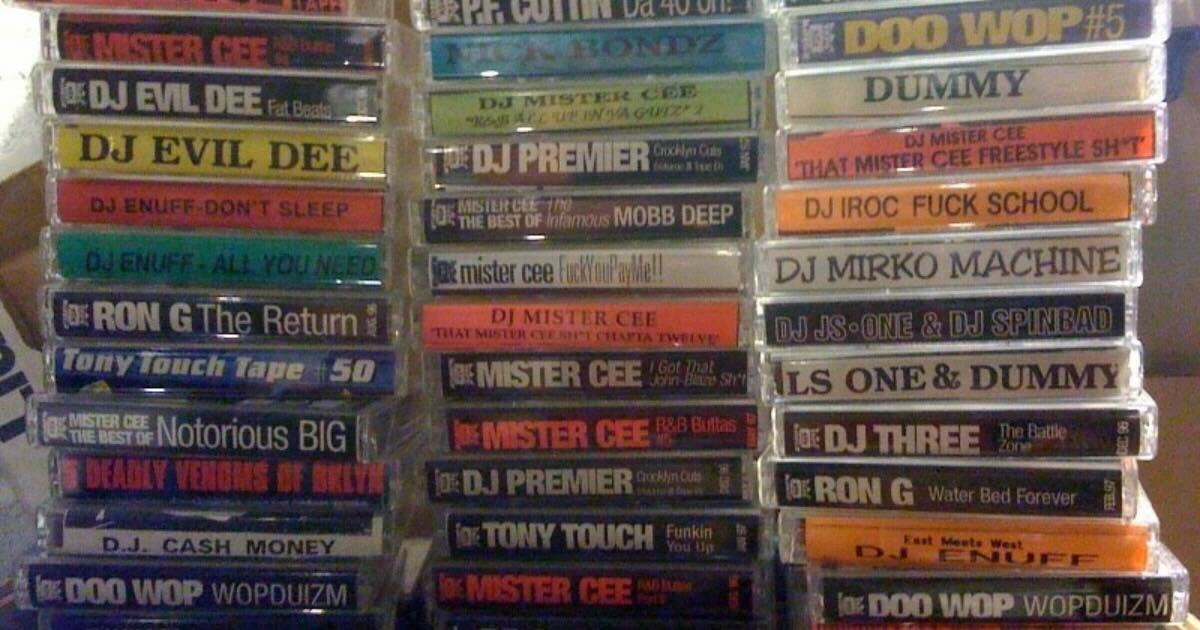
Classic 90s hip-hop mixtapes – picture courtesy of Gary Anderson
From mean streets to Wall Street: the Origins of Hip-Hop
Just like hip-hop itself, no wonder that mixtapes have their roots in the streets. DJs would blend, scratch and cut existing tracks on vinyl, create custom beats, and record their performances onto cassette tapes.
These tapes would be given away or sold out of the trunk of a car, eventually giving rise to the name “mixtape.” Because that what is was: a tape with music mixed and morphed into a new seamless audio experience. Easy, innit?
The Birth of the Hip-Hop Culture
The true origins of mixtapes can be traced back to the late 1970s when block parties were all the rage. DJs began to mix different types of music, creating catchy vibes and beats that kept partygoers dancing for hours. These mixes were recorded onto cassette tapes and distributed across New York City.
Block parties in fact were more than just a place to dance, they were a cultural phenomenon. They were a place where people from all walks of life could come together and express themselves through music and dance. Well, not really from all walks – that’s a bit too romantic, maybe.
If you were from downtown Manhattan you hardly would make it to the Bronx or to Queens, especially to dance, but…let’s just say that’s another story. But it’s safe to say that the cultural melting pot we all know hip-hop for was there, indeed. It was a time when hip-hop was still in its infancy, anyway, but it was already making a big impact on the world.
The Emergence of the Break-Beat: all hail Kool Herc the Godfather
One of the most influential DJs of this era was Kool Herc. Revered as the Godfather of Hip-Hop – mostly because of the infamous party he and his sister threw on August 11, 1973, in their 1520 Sedgwick & Cedar apartment, in the Bronx, credited as a fundamental moment for the culture – Herc was known for his innovative mixing style and his ability to keep the crowd moving, thanks to the use of two turntables and a mixer.
Extending the open drum parts of selected records, the infamous break-beat part, and creating thus impromptu new sounds for the crowd’s excitement and enjoyment, Herc made a name for himself in his native Bronx neighbourhood.
Though we don’t really have audio proof of those early days, rumours are that his early live-recorded tapes were highly sought after, and helped to popularize hip-hop throughout New York City and beyond.
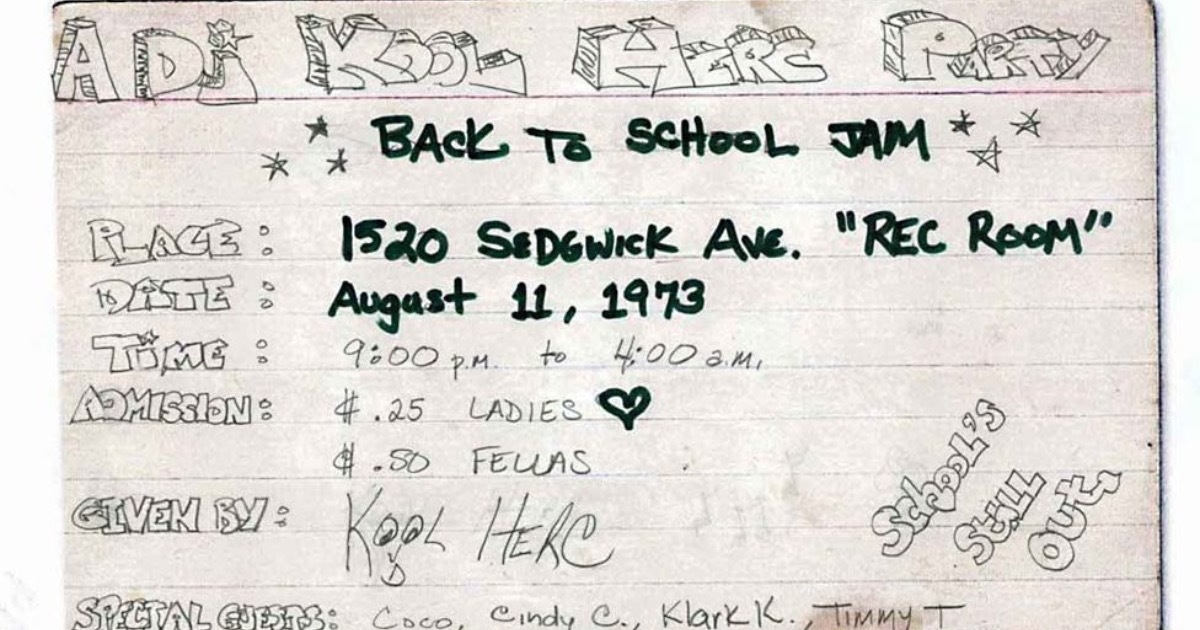
The original flyer for Kool Herc’s first party
The Role of Cassette Tapes in the 1970s and 1980s: from clubs to radios
As hip-hop culture evolved and its fame trespassed the boundaries of NY boroughs, blocks and parks where it all started, many party DJs arrived to rock crowds in mid-town Manhattan disco clubs. Hence, more and more people started participating and enjoying party tapes and the diverse sounds deejays offered.
In fact, the very early mixtapes NYC was flooded by in the 70s and 80s contained mostly recordings of live performances and MC’s battles. DJ Breakout, DJ Hollywood, The Funky Four or again Kool Herc & The Herculoids would distribute the recordings of their club performances on audio tape. In some cases, we’re talking about legendary material.
If MCs had the golden share of attention from the crowd because of their rapping abilities, DJs were nowhere close to leaving their duties. Quite on the opposite, if the likes of Grandmaster Flash and Grand Mixer DST were perfecting the scratch and cutting techniques, radio personalities and disc jockeys were pivotal, again and again.
Starting in the mid and the late-80s, with the club frenzy going stronger and bigger, people such as DJ Red Alert, DJ Chuck Chillout, and DJ Marley Marl, alongside Mr Magic, were just a few of the pioneers who helped bring hip-hop sounds to the masses via radio shows. And tapes were there, to record and document airwaves.
Whether it was live performances or radio shows, everything was audiotaped and immediately, virally spread, then dubbed and re-dubbed and re-re-dubbed by crazy fans. NY radio stations dictated then the trends of sound, cross-regionally and nationwide, and even internationally, making certain shows a style statement for hip-hop, of course.
No wonder that in some cases, these radio personalities were called also by labels to curate and compile full-fledged albums with their latest picks and flavours.
The Golden Age of Hip-Hop: 90s Mixtapes, from NY to the World
Slowly but surely, the cassette tapes became an essential part of the hip-hop scene, in NY first then nationwide. It was the primary way to get music heard outside of the mainstream, and increasingly skilled deejays were making an impact on the game. The 1990s saw the emergence of mixtapes as a promotional tool, finally, as we know it today.
Bringing the 80s roots to the next level, DJ culture was boosted by competition, technical advancements, and the evolution of the crowd’s taste, eager to devour incredible amounts of music and new sounds.
These tapes went to be more than just a collection of mixed songs, they were a way to showcase skills and creativity. They captured possibly the essence of hip-hop and its full-expansion time, as we know it ever since.
Visualizza questo post su Instagram
The early 90s New York City mixtape scene: focus and abundance…
Following in the footsteps of classical sound systems Jamaican-style (Herc was of Jamaican upbringing, too), DJs would create mixes featuring their own beats, recording their live performances: cutting, scratching, blending records, and whatnot. These tapes started to circulate throughout New York City, and beyond, even overseas, gathering a devoted following.
One of the earliest and most prolific club deejays turned mixtape master was indeed the legendary DJ Brucie B. Under the influence of the likes of Kool Herc, Grand Master Flash, and Grand Wizard Theodore, coming from the Bronx, in the Eighties the man rose to the pinnacle of the underground rap game, playing many legendary venues and recording live shows.
At the dawn of the 90s, he was incarcerated for street-related activities. He was indeed the link and inspiration for many to follow the lead in the 90s, to the point that, after his stint in jail, he became also the in-house DJ for Puffy’s own Bad Boy Records in its best days.
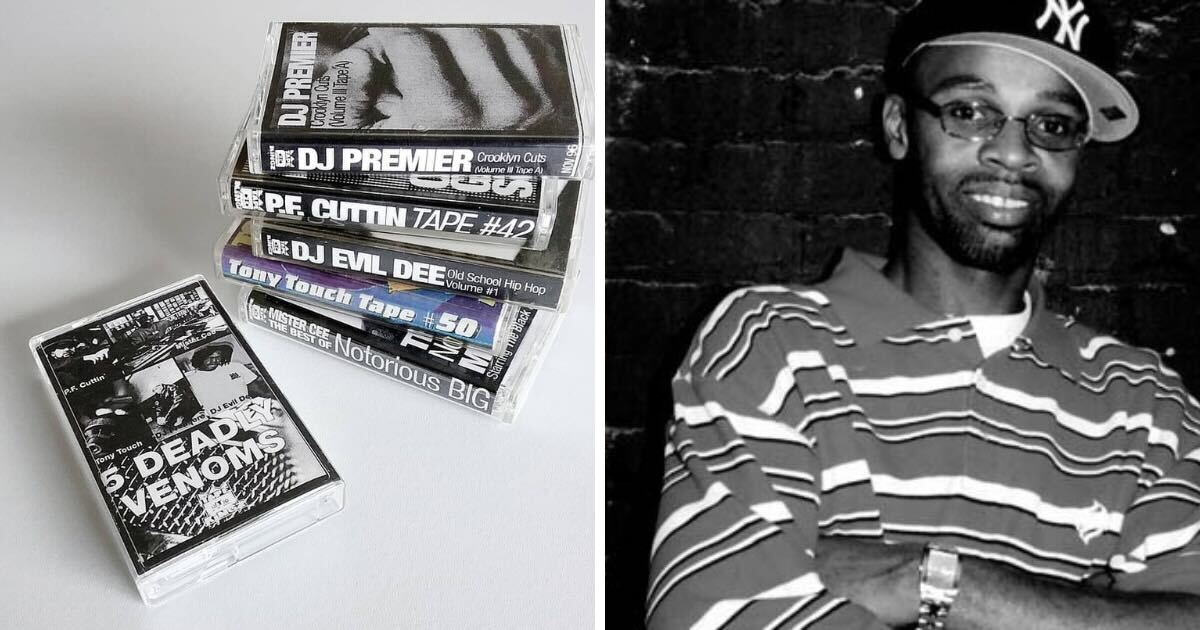
DJ Brucie B on the right, and Tape Kingz cassette tapes, as pictured by Paul Fess
The group of Brucie B-inspired deejays in early-90s New York was definitely large and aggressive when it comes to producing and promoting their works. Each of the neighbourhoods had its champion, its selector who flooded the streets with mixed tapes. The prominent names of the city were many, each with its own peculiarity and prerogative.
Surely, Brucie B’s mixtape format was the preferred medium and the elevator to fame in the case of Kid Capri, to the point of calling his debut on Cold Chillin ‘The Tape‘. A similar story happened to DJ Ron G, aka the Youngest in Charge, aka The Mixking, who introduced the world to the so-called blend mixtape. Imagine R&B artists’ vocals over Hip-Hop tracks, and vice versa.
He worked even three turntables at once to make things happen.
It’s safe to Puffy didn’t invent the remix, nor did Mary J’s hottest remix versions: Ron G did. It was 1991, and New York (and the rest of the world to follow, thanks to Yo! MTV Raps‘ host Fab Five Freddy) went crazy for him.
The tapes war in NY back then required focus and consistency. Ask DJ Tony Touch, from Brooklyn. Known in town for flooding the underground with mixtapes containing the most solid urban hits, he produced over 50 tapes in a few years of activity. Whether it was R&B joints or rap hits, his tapes were flawless.
Ironically he went down in history for being the first to collect on a single tape more than 50 emcees with as many unpublished verses, but he was following the path opened by his longtime partner DJ Doo Wop aka The BounceMaster.
Other than that, Tony Touch, at the peak of his 90s mixtape era career, will call together some of the best tape masters in town, all from Brooklyn, to give life to the legendary 5 Deadly Venoms tape.
The names, in addition to the good Tony Toca, were those of DJ Premier (yes, that Premier), DJ Mister Cee (his monographic tapes dedicated to Biggie, of whom he was the deejay, and to Mobb Deep, were just incredible),
PF Cuttin’ (the legendary deejay and producer of underground rap act Blahzay Blahzay, among other things) and DJ Evil Dee (one-third of the rap group Black Moon, half of production duo Beatminerz, and unstoppable tape master, as well as a host of some of the most sensational radio mix shows of the period at NY radio Hot 97).
Those were the days of mixtape stalls and tables almost everywhere in mid and downtown New York, especially on Canal Street, or in Brooklyn’s own Fulton Street, where the names of Stretch Armstrong, DJ Clark Kent, S+S, G Bo The Pro, and many others, rang the bells.
…as well as outside of New York, innovation for the whole United States
If New York gave it to us, the mixtape fever outside the Big Apple was no less. In no particular order, from West to East, and also to the South, the matter was very very serious, already from the end of the 80s.
An unsuspected Dr Dre in Los Angeles, for example, started and solidified his career with club performances between hip-hop and electro, and mixtapes, would you have ever said that? Yet it is so. The same goes for Dre’s half-brother, DJ Warren G, you know? Well, that’s it. On his first mixtapes, a young rapper going by the name of Snoop Dogg stood out, think about it.
In the city of LA, and on the West Coast in general, the boys have had excellent company, however. Thanks to mixtapes DJ Quik got noticed by his label in his prime, for example. However, the best-known tape masters were, once again, the personalities linked to the world of clubs and radio, in particular, especially the ones working at KDAY (LA’s reference for urban airwaves back then), with a name that was and is the reference for many true-schoolers: Mixmaster Julio G.
In Philadelphia, in the footsteps of the good DJ Jazzy Jeff, DJ Cash Money also produced mixtapes, and he was one of the forerunners of a phenomenon that then had a wide echo on the West Coast: the so-called turntablism.
Trailblazer in his unique way of cutting & scratching, Cash Money certainly inspired the members of the most famous deejay’s crew to make tapes, especially the Californians. Just think of the names of DJ Babu, DJ Rhettmatic, or J-Rocc himself, without forgetting DJ Shortkut, or Q-Bert, just to name a few, whose tapes also arrived abundantly in Europe, at one point.
Even in Texas, in the mid-90s, he didn’t exactly sit around. Right from there comes a visionary innovator, a luminary of the hardest and purest mixtape game, DJ Screw from Houston, who in just a few years has created a sub-genre and made history.
Inventor of the “chopped & screwed” style, his tapes were an explosive mixture of slowed-down instrumentals and music, made with an excellent analogue technique, which blended perfectly with the torrid climate of the city and the long journeys by the car to go from place to place.
Music to drive by, in the Texan version, which was easily adopted and heralded by the local low-life scene. Explosive, often imitated, never duplicated. Revered and celebrated by many mainstream stars, including Erykah Badu, that chopped’n’screwed style was pure fire.
From Memphis, Tennesse, another honourable mention deserves the Three-6 Mafia crex, which since the early 90s has cemented its legacy with mixtapes that featured unreleased tracks and original pieces. DJ Paul, Juicy J and Lord Infamous have thus built their empire, unknowingly laying the foundations of the trap sound, the same one that is dominating the charts all over the world today.
From mixtapes to street albums: Exclusives and Freestyles
Slowly and surely, the mixtape began to attract the attention and favour of the recording industry, which saw the tapes as a fresh way to promote their upcoming releases, as well as to test the prowess of new artists.
Some independent labels have tried creating their own tapes, in some cases, while others have started supplying deejays with promos and exclusives, to the point of completely changing the scenario.
From mixtape to street album, the step was short and inexorable. The household names and key figures of this change of trajectory, in the second half of the 90s, were undoubtedly DJ Clue and Funkmaster Flex.
As two of the most influential DJs, promoters, taste-makers, and trailblazers of hip-hop sounds from the late 1990s until early Y2Kof, their tapes were highly coveted, with fans lining up for hours to get their hands on the latest release.
DJ Clue was known for his smooth mixing style and his ability to get exclusive tracks from some of the biggest artists in the game. He was also known for his signature catchphrase, “Desert Storm!” which he would shout out during his mixes. A “shouting technique” originated by Kid Capri, someone could say.
Funkmaster Flex, instead, was a club DJ known for his simple yet effective scratch techniques and his ability to blend different genres of music together seamlessly, putting freestyles from mainstream artists in the mix. A bit of a Tony Touch on steroids, in a way. His tapes were so popular that he was eventually given his own radio show on New York City’s Hot 97.
The Impact of Mixtapes on the Y2K Hip-Hop Landscape
The industry ties these deejays had laid the ground for the mixtape era of the Y2K, for sure. The inclusion of exclusive tracks and freestyles, songs and verses that could only be heard on the mixtape, helped create a vibrant and competitive new mixtape scene. This type of exclusivity skyrocketed the phenomenon, making the tapes highly sought after by fans worldwide.
Mixtapes helped break new artists and created a buzz around collaborations and remixes. They also served as a way for established artists to experiment and try out new sounds and styles, to the point that in early Y2Ks exclusive tracks and freestyles have become the way to get music heard, period.
Many artists got their start by appearing on mixtapes, which helped them gain exposure and build a fanbase. The shift from cassette tapes to CDs increased the distribution and fruition, helping cement the idea of a street album over the old-fashioned tape, but the name “mixtapes” kind of stuck over time.
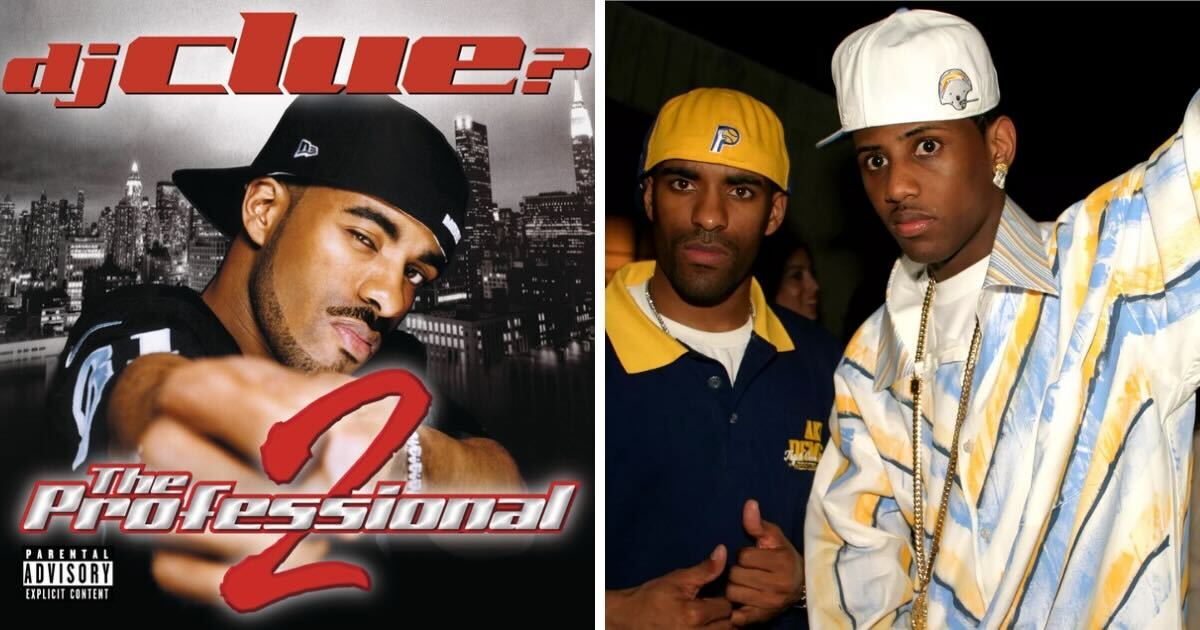
DJ Clue and Fabolous, on the right, and the legendary “The Professional 2” mixtape from DJ Clue
One of the most notable examples of a mixtape breaking a new artist is 50 Cent’s “Guess Who’s Back?“, which was released in 2002. The mixtape featured the hit single “In Da Club,” which helped launch 50 Cent’s career and cemented his status as one of the biggest rappers in the game.
Same era, different cities, different camps: the mixtapes were the preferred means of expression of crews and deejays going by the names of Diplomats, DJ Kay Slay, Fabolous, or again DJ Green Lantern, just to name a few. The streets were flooded by an unprecedented offering of albums and remixes and freestyles, battle raps, beef among artists, and whatnot.
The very same tactics led to the rise of Lil’ Wayne, for instance. Paved the way to stardom for Curren$y, and kept relevant a slew of otherwise non-relevant artists, the names are too many and too colourful to mention.
The Digital Revolution and Mixtapes
The digital revolution of the early 2000s changed everything. After the substitution of cassette tapes with CDs, the rise of digital formats kicked in: mixtapes could be distributed and downloaded online, rather than being physically produced.
The full digital fruition paved the way for the emergence of online mixtape platforms and the tremendous role of social media in mixtape promotion. Braced for impact, older heads weren’t exactly ready when a new generation of fans hungry for the latest exclusive kicked onto the scene.
From Analog to Digital Formats: the major shift
The shift from analogue to digital formats was a game-changer for hip-hop mixtapes. In the past, fans had to physically buy cassette tapes or CDs to get their hands on mixtapes. But with the rise of digital formats, everything changed.
Digital revolutionized the game by allowing fans to easily download mixtapes from the internet and listen to them on their computers or portable music players. This meant greater distribution and accessibility, opening up a world of new music for fans everywhere. Tony Montana would be proud.
Digital formats also brought flexibility to mixtapes. Unlike physical media, digital platforms had no limits on length or content. Mixtapes became longer and more diverse, sometimes even overflowing with tracks.
The Emergence of Online Mixtape Platforms
The emergence of online mixtape platforms like DatPiff, LiveMixtapes, and MyMixtapez further transformed the mixtape scene. These platforms became central hubs where artists and DJs could upload their mixtapes for fans to discover and enjoy. It was a win-win situation, with fans discovering new talent and artists connecting with their audience.
One of the biggest advantages of online mixtape platforms was the ability to track and measure the success of a mixtape. Artists and DJs could see how many downloads, views, and shares their mixtapes received. They could also gauge fan engagement and feedback, gaining valuable insights into their audience’s preferences. Sometimes, it was a bit too much information to handle.
The Role of Social Media in Promotion
Social media played a vital role in mixtape promotion. Artists and DJs could directly share their latest releases on platforms like Twitter and Instagram, generating excitement among their fans. Meanwhile, fans had spaces to share and discuss their favourite mixtapes, connecting with others who shared their passion. It was a global community of hip-hop mixtape lovers.
All that glitters ain’t gold: the Legal Battles Surrounding Mixtapes
However, mixtapes have faced their fair share of legal battles. Copyright infringement and sampling issues have plagued the mixtape scene. The use of samples from existing songs often led to legal disputes and lawsuits.
And major record labels cracked down on mixtape distribution, resulting in the closure of physical distributors and the removal of mixtapes from online platforms. But that didn’t stop the game, as new players always emerged.
Copyright Infringement, Sampling Issues, No Distribution: yet, still…
Despite the challenges, mixtapes remain an integral part of hip-hop culture. Many artists and DJs argue that mixtapes fall under the fair use doctrine, promoting new artists and sounds through creative expression. Mixtapes have come a long way since their humble beginnings on the streets of New York City.
They have shaped and evolved hip-hop culture, providing a platform for experimentation and showcasing skills. Controversies aside, mixtapes continue to thrive and hold a significant place in hip-hop today.
On top of that, starting mid-2000s, major record labels started to crack down on mixtape distribution. This led to the shutdown of many physical mixtape distributors, as well as the removal of mixtapes from online platforms. Again, nothing really changed, as many newcomers arrived.
Hip-Hop Mixtapes are dead, long live the mixtape!
Many artists and DJs have argued that hip-hop mixtapes fall under the fair use doctrine, as they are a form of creative expression that can help promote new artists and sounds. Despite the legal challenges, cultural changes and fast-paced times we live in, hip-hop mixtapes continue to be an essential part of the culture.
Hip-hop mixtapes have come a long way since their early origins on the streets of New York City. They have played a significant role in the development and evolution of the culture, serving as a platform for artists and DJs to experiment and showcase their skills.
Despite the challenges and controversies, mixtapes remain a vital part of hip-hop today, so… Long live the hip-hop mixtapes!
